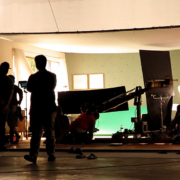Most industries, truth be told, have been revolutionized by the changeover from analog to digital. Vinyl records gave way to CDs as just one part of a never-ending transition from old school to new. Yet, it’s taken some time for the event industry to go through its own revolution brought on, in part, by the recent pandemic. Today, event managers need to embrace digital as part of a hybrid approach to their craft, and they need to have a complete understanding of what is available and how they can use it to the best effect. So, if you’re getting ready for 2022 and want to hit the ground running, what do you need to know about the hybrid event approach, and what are some examples of “cool” tech?
Down to Basics
You don’t have to be a tech geek to see how these new advances can benefit your events. After all, these solutions are designed to capture and keep your audience’s attention, specifically those that are far away and behind a computer screen.
Strategic use of the latest event technology can make a huge difference and ensure that your remote attendees are equally as engaged as your live people. Don’t forget that active engagement is the most basic yet most important factor when judging overall success.
New technology can also extend the impact of an event and bring people into the conversation well in advance of the actual date. You will be able to communicate with your attendees by delivering relevant and often personalized content that will make them feel part of the picture as the event approaches.
Smart Personalization
You can also deploy smart apps that direct attendees to a session of particular interest to them, based on their physical location on site. GPS positioning can help to target them when they are at their most responsive. Smart apps can also “ping” remote attendees to remind them of a specific breakout session when their thoughts may well have turned away from the broader event.
Three Ideas To Chew On
Beam Them In
Surely, if a hybrid event is to be as successful as possible, you need to blur the line between in-person and virtual. What if you could transport your virtual attendees to your live destination so that they can interact with the people in your room?
While not yet in the realm of Star Trek, you can now get technology that will display a picture or live video of one of your attendees on a tablet attached to a movable robot. These robots can glide around your live venue, and attendees will be invited to talk to the remote visitor using the built-in audio equipment. The digital participant can control the robot remotely and can experience the event through another dimension. As a manager, you could share some screen time with several participants during the event. You can also focus on breakouts, “sending” one of your remote attendees into this room to host the session or otherwise contribute.
Spread the Goodness
Or why not invest in technology that allows you to connect multiple live events to a central hub? In this case, the hub can be considered the main event where most live attendees gather and should be in a city close to your core attendee base – or is easy to get to. The other cities could be in other parts of the country or even overseas and digitally connected to the central hub. In this case, attendees at the secondary events can still experience the buzz of live interaction without the additional hassle and cost of long-distance travel. This may be particularly attractive to people in the post-pandemic era.
You could take this one step further and incorporate purely digital attendance as well, where people can still log into the event from their homes. Obviously, this approach does ramp up the complexity, and you will need high-quality virtual event technology to make this all work seamlessly, with top-rated AV staff on hand.
Shine the Spotlight
At some events, keynote presenters may want to work remotely, but you will still want their impact to be as powerful as possible. Sound and light are critical, of course, and their background setting must be appropriate. In this case, you can use the latest technology to help on the lighting front by getting your keynote speaker to use a professional, compact but powerful lighting tool.
These simple illuminated bars use the same color temperature favored by movie lighting experts. They simply sit on the desk and will cast the presenter in the perfect light. Your attendees will be able to see their facial expressions clearly and feel as if they are in the same room.
Mastery Required
Such technical innovations are no longer optional or “nice to have.” They are an essential way to help keep your audience engaged and ensure that networking can be productive, whether remote or on-site. Event managers who embrace this technology and fully understand how to make it work will undoubtedly have a leg up on the competition. They will hit the ground running in 2022 and leave the bad memories from the past couple of years in the rearview mirror.
Certification
With mastery in mind, PCMA has launched the Digital Event Strategist certification. This course is designed to make you a globally recognized expert at connecting people to brands, opportunities, and ideas through business events in the digital world. It’ll help you to grow your audience engagement and operationalize your hybrid event production work.
Platform Approach
Also, don’t forget to work with companies that can help you carry the burden when you organize your next hybrid event. eShow has a revolutionary platform called Virtual Event Management. It aims to create a full event experience, whether in person, digital, or hybrid, and covers every step from registration to post-event analysis.
Time to Embrace
For your multifaceted event to be successful, you will need to understand and embrace the latest in digital event technology. However, if you do, you’ll be sure to have the edge over managers who believe that analog is still “in.”








